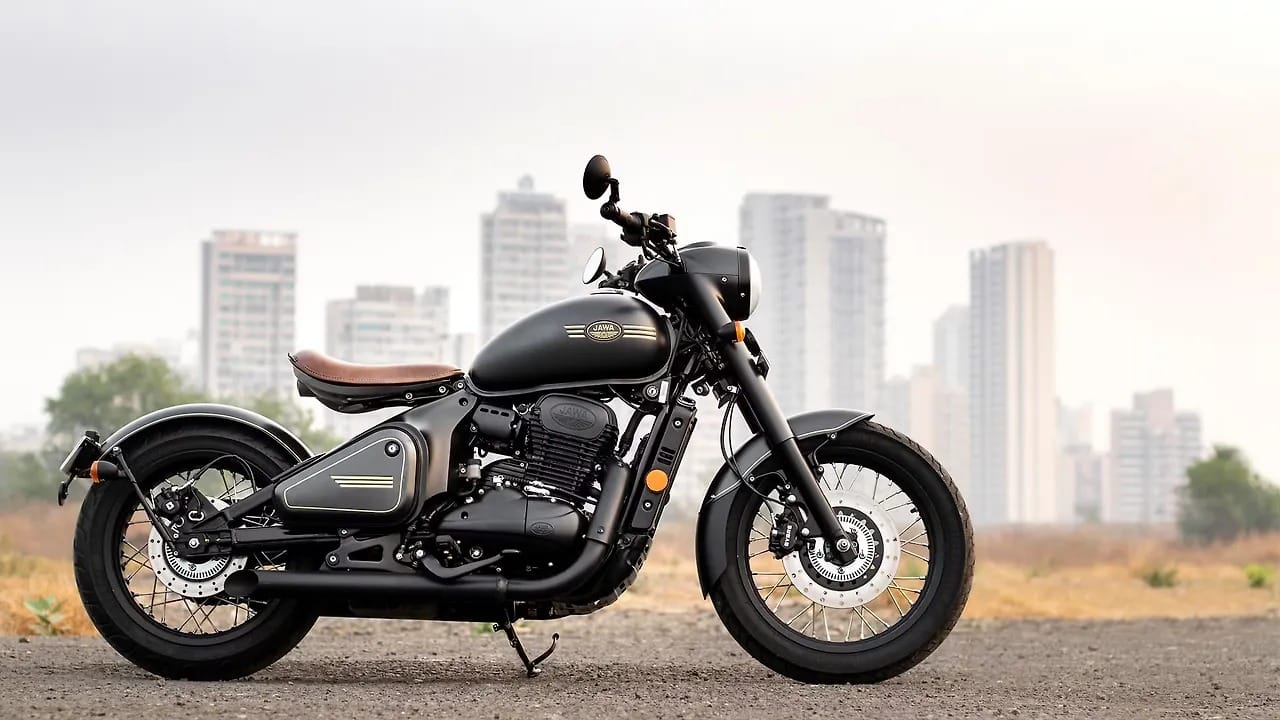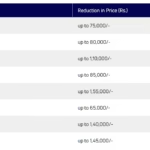In the ever-evolving world of motorcycles, few bikes manage to stand apart quite like the Jawa Perak. While most cruisers follow the tried-and-tested template of pillion comfort, chrome accents, and wide frames, the Perak takes a detour. It brings to Indian roads a factory-custom bobber with a distinct attitude—low-slung, minimalistic, and unapologetically solo. A product of Classic Legends, the Perak carries forward the Jawa legacy while boldly embracing a modern, raw edge.
This detailed review explores everything that makes the Perak a unique proposition—its design, performance, features, and where it stands in the Indian market.
Design & Styling
At first glance, the Perak doesn’t look like anything else in its segment. It’s not just a motorcycle; it’s a style statement on two wheels. Its standout feature is the “floating” solo seat, finished in tan-brown leather, mounted cleverly on a hidden subframe. This single-seat design not only enhances the bobber appeal but also gives it an unmistakable silhouette.
The matte black-grey bodywork, coupled with subtle golden pinstripes, lends it an old-school aura that’s both elegant and aggressive. A teardrop-shaped fuel tank flows smoothly into the rear frame, giving the bike a stretched, purposeful look. The fenders—especially the rear—are extended and contoured to suit the bike’s vintage roots.
Wide handlebars with bar-end mirrors complete the retro-modern fusion, enhancing not just the aesthetics but also rider control. While the headlamp sticks to a traditional halogen unit, the sleek LED taillight adds a modern touch to the rear. As a complete visual package, the Perak is unlike anything else in the under-400cc category in India.
Engine & Performance
Powering the Perak is a 334cc single-cylinder, liquid-cooled, DOHC engine that produces around 30.2 bhp and 32.7 Nm of torque. This engine is an upgrade over the 293cc mill used in Jawa’s Classic and Forty-Two, giving the Perak a performance edge—especially in the mid-range.
The bike delivers strong torque low in the rev band, making it enjoyable in city riding and semi-highway stretches. It offers a smooth and linear power delivery, with a six-speed gearbox that makes shifting fluid and responsive. Cruising at 90–100 km/h feels effortless, and the engine retains composure even at higher RPMs.
Its top speed is approximately 130–140 km/h, which is decent for its class. While the Perak isn’t built for speed demons, it’s more than capable of spirited weekend rides and urban bursts of adrenaline.
Chassis, Suspension & Ride Quality
The Perak is built on a double-cradle tubular frame that holds everything together tightly. The front suspension features conventional telescopic forks, while the rear uses a monoshock mounted underneath the seat—contributing to the bobber’s unique stance.
Thanks to its 750 mm seat height, the bike is accessible to a wide range of riders, especially those who are on the shorter side. The ergonomics are rider-friendly, with slightly rear-set footpegs and wide bars allowing for a laid-back but engaged posture.
However, the suspension leans toward the stiffer side. On well-paved city roads, this setup feels sporty and confident. But on uneven surfaces or longer commutes, the rider may feel some of the road’s imperfections. This stiff setup, while stylish, trades off some comfort for aesthetics and feedback.
Braking & Safety
Braking duties are handled by a 280 mm front disc with a dual-piston caliper and a 240 mm rear disc with a single-piston caliper. Dual-channel ABS comes standard, offering excellent control and preventing wheel lock during emergency stops.
The Perak’s braking system is progressive and inspires confidence. Paired with its relatively low kerb weight of around 185–187 kg, the motorcycle maintains excellent braking balance. This setup makes city commuting, twisty backroads, and sudden stops safer and more predictable.
Comfort & Ergonomics
The Jawa Perak is unapologetically a solo rider’s machine. It lacks a pillion seat and grab rail, so it’s clearly not made for two-up touring or carrying passengers. But what it offers instead is a tight, personalized cockpit experience.
The seat, although thin, is surprisingly supportive for short to medium rides. The riding position is upright with a touch of aggressiveness, thanks to the handlebar and peg setup. For riders between 5’6” and 6’, the ergonomics feel almost tailor-made.
One limitation is that the lack of storage and grab points makes it a little inconvenient to move around manually. However, with a manageable weight and well-balanced structure, it doesn’t pose a major issue.
Features & Instrumentation
True to its minimalist philosophy, the Perak offers just the basics. It comes with a halogen headlamp and indicators, and a small LED taillight at the rear. The instrument cluster is an analog speedometer with a digital odometer. There’s no tachometer, no riding modes, and no Bluetooth connectivity—pure, analog riding at its finest.
While this may be a dealbreaker for riders expecting high-tech features, it plays perfectly into the Perak’s charm as a stripped-down, raw motorcycle. It focuses on the experience of riding rather than screens and sensors.
Fuel Efficiency & Tank Range
The Perak offers a practical mileage of about 30–34 km/l in real-world conditions. With a fuel tank capacity of 13.2 litres, it delivers a healthy riding range of around 390–440 km on a full tank. For a motorcycle in the 300–350cc segment, these numbers are respectable and make it ideal for both daily rides and short weekend getaways.
Price & Market Positioning
In terms of pricing, the Jawa Perak is positioned as a premium 350cc offering:
- Ex-showroom Delhi: ₹2.13 lakh
- On-road Siliguri: Approximately ₹2.29 lakh (inclusive of RTO, insurance, and other charges)
- Other cities: ₹2.40–2.59 lakh depending on local taxes
This pricing places it slightly above the Jawa 42 and slightly below modern classics like the Royal Enfield Interceptor 650. When compared with the Royal Enfield Classic 350 or Honda H’ness CB350, the Perak is in the same ballpark but offers a very different character and appeal.
Competitor Comparison
| Model | Engine | Power | Fuel Efficiency | Price (ex-showroom) |
|---|---|---|---|---|
| Jawa Perak | 334cc, Single-Cyl | ~30 bhp | 30–34 km/l | ₹2.13 lakh |
| Royal Enfield Classic 350 | 349cc, Single-Cyl | ~20 bhp | 30–35 km/l | ₹1.95–2.05 lakh |
| Honda H’ness CB350 | 348cc, Single-Cyl | ~20.7 bhp | ~35 km/l | ₹2.15–2.20 lakh |
The Perak stands out for its performance and design, while its rivals offer broader practicality and modern features.
Pros and Cons
Pros:
- Eye-catching bobber design
- Punchy 334cc engine with strong mid-range
- Comfortable for solo riders
- Lightweight and easy to maneuver
- Dual-channel ABS for added safety
Cons:
- No pillion seat or provision for luggage
- Stiff ride quality over bad roads
- Lacks advanced tech and features
- Slightly higher pricing than direct competitors
Who Should Buy the Jawa Perak?
The Perak is designed for those who ride for the thrill, the image, and the emotion. It appeals to:
- Urban riders seeking something unique and retro
- Individuals who ride solo and prioritize style
- Enthusiasts wanting a factory-built bobber with personality
- Riders who value mechanical simplicity over feature overload
It’s not ideal for families, long-distance tourers, or pillion travel. But for those who want to make a statement on the road, the Perak hits the sweet spot.
Final Verdict
The Jawa Perak is more than a motorcycle—it’s a lifestyle choice. With its low-slung bobber design, strong engine, and stripped-down ethos, it’s tailor-made for those who believe riding is an expression of individuality. It’s not perfect, and it doesn’t try to be everything to everyone. But that’s exactly why it’s special.
If you’re looking for something bold, something soulful, and something different—then the Perak might just be your next ride. Official Jawa Perak Website










